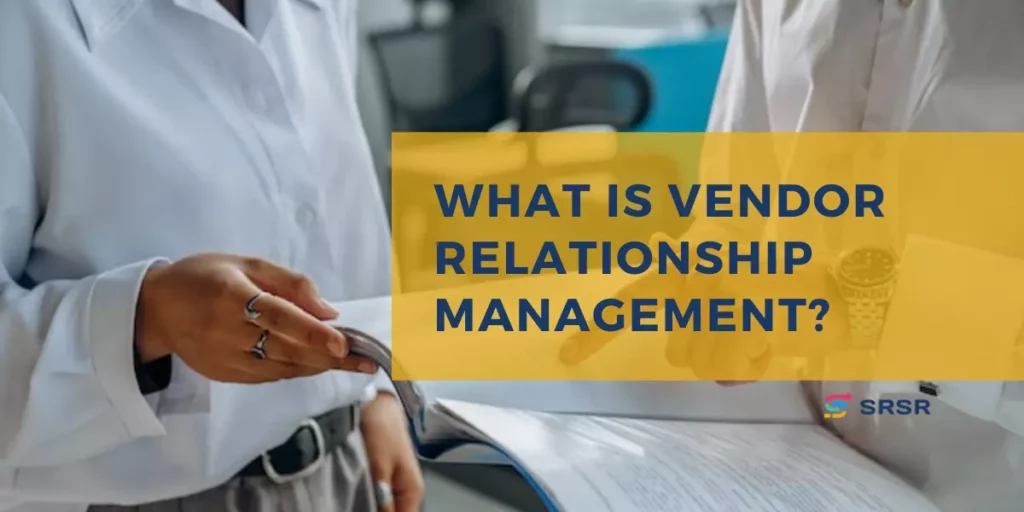No business is an island. No matter your industry, you will interact with other companies to support your business goals. Your vendors will provide essential products or services. This article examines vendor relationship management by discussing the basics of collaborating with vendors to foster a long-term business relationship that benefits you both.
What is vendor relationship management?
Vendor relationship management (VRM) is the strategic practice of managing and optimizing your relationships with external vendors or suppliers. By focusing on establishing collaborative and mutually beneficial partnerships with vendors, your business can better achieve goals, enhance efficiency, reduce costs, and drive innovation.
VRM aims to create a strategic and transparent approach to vendor management, ensuring that both parties gain from the relationship.
Why is vendor relationship important?
Enabling collaboration and alignment between your business and its vendors can lead to improved products, services, and overall performance. Streamlined vendor management can also help create an overall competitive advantage. Additional benefits of VRM practices include the ability to:
- Leverage the expertise, resources, and innovation capabilities of vendors to drive your own business objectives
- Negotiate favorable contracts, optimize procurement processes, and identify cost-saving opportunities
- Assess and mitigate risks associated with vendor relationships and ensure compliance with regulatory requirements to safeguard your business operations
- Promote innovation by tapping into the vendor’s industry-specific insights, technological advancements, and best practices
- Minimize administrative burdens, reduce redundancy, and enhance overall efficiency in dealing with vendors
Key components of vendor relationship management

Every business is distinct, yet effective vendor relationships rest on common core elements. Learn more about the key components of successful vendor relationship management.
Vendor selection
Strong relationships with vendors start with a deliberate selection of the businesses you can rely upon. Carefully evaluate potential partners based on factors such as your business requirements and the vendor’s:
- Expertise and capabilities: Assess their industry experience, track record, and the quality of their offerings.
- Financial stability: Reviewing their financial statements, credit ratings, and client references can help you determine if they have the resources to meet your needs in the long term.
- Quality: Consider their performance history, including on-time delivery, customer satisfaction, and any performance guarantees they offer.
- Reputation: Look for vendors who have a strong reputation, relevant certifications, and a proven ability to deliver results.
- Scalability and flexibility: The vendor may be able to meet your current business needs, but it’s useful if they can grow with you too.
- Pricing and value for money: Take into account initial costs as well as ongoing maintenance, support, and potential hidden fees to determine the overall return on investment the vendor can deliver.
- Support and service: Evaluate factors such as customer support availability, response times, and their commitment to addressing issues promptly.
- Cultural fit and compatibility: Consider how the vendor communicates and collaborates. Do their business values align with yours? A good fit, with a company that shares your views on environmental, social, and corporate governance and compliance, will lead to a better business relationship.
Contract and performance management
In onboarding a new vendor, establish agreed-upon standards and open channels of communication. Sharing information to align goals can help both parties identify areas for improvement and drive continuous improvement.
Carefully review the contract terms and conditions to ensure it delineates:
- Protection for your organization’s interests
- Clear deliverables
- Specific performance metrics
- Service-level agreements, termination clauses, and intellectual property rights.
You may negotiate more favorable terms and conditions in vendor contracts by pulling levers such as pricing, delivery schedules, quality standards, and performance metrics.
Regularly monitoring and evaluating vendor performance against expectations and agreed-upon metrics can ensure compliance and identify areas for improvement.
Relationship building and collaboration
When you build strong relationships, your vendors become partners. They know their side of the business in a deeper way than you. When you communicate your business goals, the vendors may add value that goes beyond simply getting you those goods on time. A vendor that views your relationship as a partnership may suggest ways to rid your system of inefficiencies or to cut expenses.
A strong relationship also fosters better communication. This may involve periodic meetings, joint planning, and sharing of information and resources. For instance, if your supplier needs to change pricing when material or labor costs change, you’re more likely to find out in time to adjust or negotiate new terms when there is a solid foundation of trust and respect.
A durable vendor relationship thrives and can also lead to more business — for both parties. As confidence in each other’s business practices and processes grows, vendors could suggest you to their customers and vice versa. This mutual trust can also encourage innovation that benefits the overall partnership.
Issue resolution and conflict management
Establishing effective channels of communication and fostering collaboration with vendors can help foster transparency and make it easier to address any issues and manage conflict.
Effective communication and proactive problem-solving can also help guide successful issue resolution and conflict management. These steps can help.
- Begin by promptly identifying and acknowledging an issue or conflict.
- Work together to define the problem and ensure all parties have a clear understanding of the situation. This may involve reviewing documentation, contracts, and performance metrics or conducting further investigations.
- Avoid blame, listen actively, and adopt a collaborative approach to find a mutually beneficial solution.
- In evaluating potential options, emphasize the shared goal of maintaining a successful working relationship.
- Look for solutions that can improve the relationship and prevent similar issues from arising in the future.
- Document agreed-upon solutions and any changes to the existing contract or terms.
- Identify any lessons learned and areas for improvement in managing future vendor relationships.
Continuous improvement
Encouraging continuous improvement and innovation through feedback, performance reviews, and exploring new ways to optimize vendor relationships can further drive business value. You might support continuous improvement in your supply chain relationships by setting up benchmarks to evaluate vendor performance and keep both parties’ goals aligned. Provide and welcome constructive feedback via ongoing dialogue that promotes a culture of continuous improvement.
Keeping lines of communication open with vendors, you could also approach vendors to contribute their expertise in collaborative problem-solving and an exchange of innovative new ideas. You might even set up joint planning and review sessions to provide a platform for discussing challenges and sharing best practices. Performance incentives and rewards may also recognize and motivate improvement efforts. Another idea is to invest in vendor development programs. Focusing on enhancing the vendor’s skills, knowledge, and capabilities can enable them to better meet your organization’s needs.
Best practices for managing vendor relationships
VRM practices can help you streamline vendor management, enhance operational efficiency, reduce costs, mitigate risks, and create a competitive advantage. Try these top strategies for successfully managing supplier relationships.
Make your supply chain visible
Your supply chain could have many links, stretching nationally or even globally. Wherever your business relationships reach, it’s important to know what’s going on in your supply chain.
One logistics company suggests supply chain managers should stay current on:
- Order receipt by the supplier
- Status of raw materials to complete order
- Supplier’s manufacturing program and status
- Delivery date from the supplier
- Shipping details
- Customers and regulatory information
- Current order status, especially with regard to actual progress to plan
Your business can support supply chain visibility with digital transformation. Many supply chain management and automation tools offer greater transparency and efficiency.
Diversify your supply chain

Relying on one or two main suppliers makes it easy to get to know them, which is a good thing. However, this approach can leave you hanging if one of those few suppliers runs into issues. Make your supply chain more resilient by working with more than one supplier and regularly evaluating each one to ensure that you always have a backup available.
Identify suppliers that can meet your needs both regionally and beyond. The COVID-19 pandemic wreaked havoc on businesses relying exclusively on overseas suppliers. Shipping costs went up dramatically, and delivery times stretched out too.
Thinking of supply chain diversity in terms of partnering with companies owned by people from historically underrepresented groups can also benefit your business. EY suggests exploring new, diverse suppliers can reduce costs, support greater agility, and provide more supply chain resilience.
Avoid having too many vendors
Having too many vendors can prove problematic. For one thing, it’s a lot of relationships to manage. Plus, evaluating all those suppliers and ensuring they are meeting your standards not only for material or product quality but also ethics and sustainability can become overwhelming.
Partnering with too many different companies can also be costly. You might find economies of scale advantages by consolidating your business with a more select group of vendors. Further, focusing on fewer relationships can reduce your exposure to supply chain vulnerabilities.
Optimize vendor relationships to drive value
Business is a team effort, and this includes your supply chain. Understanding the importance of strong vendor relationships and following this article’s best practices to manage those connections can help support your long-term success. Learn more about business vendors and how to select the right ones for your business.

